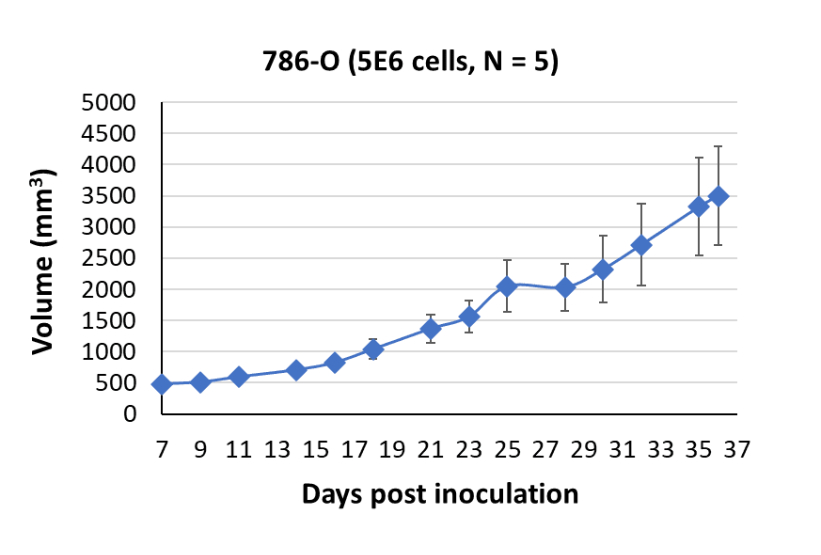About 786-O
The 786-O cell line, derived from a primary tumor of a 58-year-old male patient with renal adenocarcinoma, provides an excellent model for investigating cell signaling and molecular biology in the context of renal cell carcinoma (RCC). These cells exhibit an epithelial-like morphology and grow as adherent monolayers, mimicking the characteristics of renal epithelial cells.
A key feature of the 786-O cell line is the absence of the von Hippel-Lindau (VHL) tumor suppressor gene. In RCC, the VHL gene is frequently mutated or deleted, leading to dysregulation of various cellular processes, including angiogenesis and metabolism. The lack of VHL expression in 786-O cells reflects mutations commonly observed in RCC and provides an opportunity to explore the downstream signaling pathways affected by VHL.
Additionally, the 786-O cell line demonstrates broad resistance to conventional chemotherapeutic agents and radiation therapy. This resistance phenotype makes the 786-O cells a valuable model for studying the molecular mechanisms underlying drug resistance in RCC. By investigating the cell signaling pathways involved in drug resistance, researchers can gain insights into potential therapeutic targets and develop strategies to overcome treatment resistance in RCC patients.
In vivo, the 786-O cell line exhibits high tumorigenic potential when implanted into nude mice. These xenografts display highly vascularized tumors, reflecting the angiogenic nature of RCC.
786-O Tumor Kinetics in the SRG™ Rat

Here is the growth curve for this cell line’s tumors in Hera’s SRG Rat.
Products & Services
Xenograft Efficacy Studies
Includes collection of blood, tissues & tumor for ADME, PK/PD and analysis.
(Bi)weekly Tumor Sampling
Via fine needle aspiration (FNA). For longitudinal evaluation of drug exposure, histology and gene expression.
OncoRats
Cutting edge models optimized for engraftment.
Get help with your research by scheduling a call with Hera.

References
- Czyzyk-Krzeska, Maria, and Jaroslaw Meller. “Von Hippel–Lindau Tumor Suppressor: Not Only HIF’s Executioner.” Trends in Molecular Science, 1 Apr. 2004, www.cell.com/trends/molecular-medicine/fulltext/S1471-4914(04)00052-8.
- Shen, Chanjuan, et al. “IMMUNOPHENOTYPIC Characterization of Sphere-Forming Cells Derived from the Human Renal Cell Carcinoma Cell Line 786-O.” American Journal of Translational Research, 15 Dec. 2018, pubmed.ncbi.nlm.nih.gov/30662644/.
